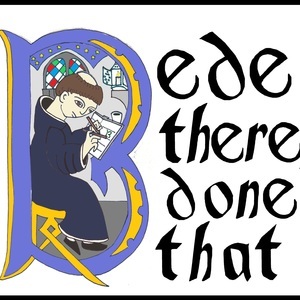Episode 1
Dia de Los Muertos
November 29th, 2018
42 mins 29 secs
Your Hosts
Tags
About this Episode
**Episode 1: Dia de los Muertos (Day of the Dead) - Show Notes
*Episode Summary *
In our first episode, we talk about Día de los Muertos, Mexico's unique take on All Souls and All Saints Days. We discuss the pre-Hispanic history of the holiday and whether it is truly Catholic (we say Yes!). Our sources are listed down in the next section, especially the book The Skeleton at the Feast by Elizabeth Carmichael and Chloë Sayer. Here is a quick summary of what we covered in this episode:
Many traditions now connected with Day of the Dead go back to Mexico's Native American roots. The Aztecs believed "the nature of life was strictly governed by the need to propitiate the gods." (Skeleton at the Feast, page 28). The Aztec god who ruled the underworld was named Mictlantecuhtli and depicted as a skeleton. The Aztecs celebrated two month long festivals called the "Little Feast of the Dead" and the "Great Feast of the Dead" in the summer. Practices such as decorating altars with flowers and food offerings go back to these festivals.
When the Spaniards arrived, they brought Catholic missionaries with them, especially the Franciscans. The Catholic missionaries tried to win converts partly by transferring some aspects of the Aztec holidays over to similar Christian holidays. This is how the summertime feasts of the dead ended up transferred to November 2, All Soul's Day. Attending mass, tolling of bells, and prayers for the souls of the dead were added to the Day of the Dead celebration. However, the holiday continued to be celebrated differently in the Native American countryside versus the more Mestizo urban areas.
So, was the Catholic conversion of this holiday complete and authentic? Listen to the podcast to hear what we thought!
The images of playful, laughing skeletons (calaveras in Spanish) that are connected with Day of the Dead have a rich history of their own. Images of skulls and skeletons go all the way back to the pre-Hispanic past in Mexico and can be seen in surviving Aztec books, such as the Codex Borgia. The skulls were updated by the influential early 20th century engraver José Guadalupe Posada (see The Skeleton at the Feast, pages 125- 127 for famous examples). There is even a visual reference to Posada's famous engraving La Catrina in the 2017 Disney/Pixar movie Coco.
Other symbols connected with Day of the Dead include the family ofrenda, an altar where mementos and pictures of loved ones are placed; flowers, especially marigolds; elaborately cut paper banners (see Skeleton at the Feast, page 32 for an ancient example); and sweets such as pan de muerte.
Sources:
The Skeleton at the Feast: The Day of the Dead in Mexico by Elizabeth Carmichael and Chloë Sayer (University of Texas Press, 1991) - This is the book we were mainly discussing in the episode whenever we talk about "the chapter" we read or what "they " told us about Day of the Dead. This is highly recommended for understanding the history of Day of the Dead.
Day of the Dead in Mexico: Through the Eyes of the Soul by Mary J. Andrade (La Oferta Review Inc., 2002) - We did not discuss this book directly , but it includes bilingual text and many colorful photographs of how Day of the Dead is celebrated in different parts of Mexico.
*Cover Art Credit: *
*Calavera de la Catrina (Skull of the Female Dandy), from the portfolio 36 Grabados: José Guadalupe Posada, published by Arsacio Vanegas, Mexico City, c. 1910 [Public Domain]
*Children's books: *
The Festival of Bones [El Festival de las Calaveras] by Luis San Vicente (Cinco Puntos Press, El Paso, Texas, 2002)
Holidays, Festivals & Celebrations: Dia de Los Muertos by Ann Heinrichs, Illustrated by Mernie Gallagher-Cole (The United States of America by The Child's World, 2006)
Dia de Los Muertos by Roseanne Grennfield Thong, Illustrated by Carles Ballesteros (Albert Whitman & Company, Chicago, IL, 2015)
*Movies: *
Coco (Disney and Pixar, 2017)
The Book of Life (Reel FX, 2014)
"Say hi to your mother for me" quote by Andy Samberg portraying Mark Wahlberg in SNL Skit (Season 35, 2009)

